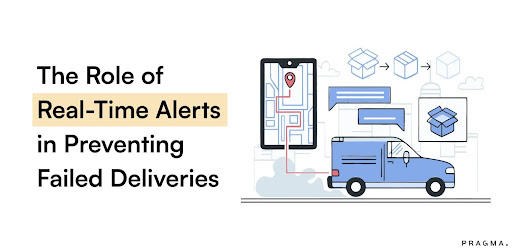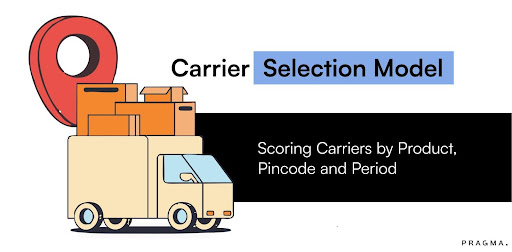An ecommerce dashboard transcends being just a mere tool; it emerges as a dynamic hub of actionable insights finely tuned for digital commerce excellence. It presents a comprehensive array of vital data points, metrics, and KPIs meticulously curated to provide a snapshot of your online store's performance, highlighting the importance of Realtime Data and Ecommerce
The Influence of a Real-time Ecommerce Dashboard serves a broader purpose beyond mere reporting; it empowers store owners with real-time intelligence, facilitating swift and informed decision-making that propels success.
Unlike static, standard reports, An ecommerce dashboard delivers a dynamic, interactive data visualisation experience, arming entrepreneurs with the ability to analyse trends, identify growth opportunities, and proactively address potential challenges with a precision once deemed unattainable. Ecommerce India monitoring ROI becomes seamless with real-time insights that optimize marketing strategies and enhance profitability.
Why Every Online Store Needs an E-commerce Dashboard
An e-commerce dashboard is a powerful tool that consolidates key metrics and data into a single interface, giving business owners and teams real-time visibility into their store’s performance. In today’s fast-paced digital environment, having quick access to the right data is essential for making informed decisions, tracking progress, and optimising growth strategies.
A well-designed dashboard enables businesses to monitor performance metrics, analyse trends, and respond proactively to challenges. Without it, online stores risk missing opportunities or spending too much time manually tracking performance across multiple channels.
Who Needs an E-commerce Dashboard?
E-commerce dashboards are invaluable for various stakeholders within an organisation. Here’s a breakdown of who benefits and how:
- Business Owners & CEOs
- Why: To track revenue growth, profit margins, and overall store performance.
- How: Dashboards provide high-level insights such as total sales, customer lifetime value (CLV), and monthly trends, helping executives make strategic decisions.
- Marketing Teams
- Why: To measure the performance of campaigns, conversion rates, and ROAS (Return on Ad Spend).
- How: Dashboards highlight key marketing KPIs like website traffic, cart abandonment rates, and email performance, allowing teams to adjust their efforts quickly.
- Sales Managers
- Why: To monitor sales volume, product performance, and customer acquisition.
- How: Dashboards track sales by channel and product category, giving sales managers insight into which products are driving revenue.
- Customer Support Teams
- Why: To stay on top of customer feedback, response times, and satisfaction ratings.
- How: Dashboards offer insights into NPS (Net Promoter Score) and support ticket volumes, ensuring high levels of customer satisfaction.
- Operations and Inventory Managers
- Why: To manage stock levels, avoid shortages, and streamline order fulfilment.
- How: Dashboards track inventory levels and fulfilment times, helping managers stay ahead of demand.
What is an eCommerce dashboard?
An eCommerce dashboard is a centralised platform that provides a comprehensive overview of key metrics, data points, and performance indicators related to an online store's operations and sales activities.
It offers real-time insights into various aspects of eCommerce, including sales performance, website traffic, customer behavior, inventory management, marketing effectiveness, and more.
By consolidating this information into one interface, eCommerce dashboards enable businesses to monitor their performance, identify trends, track goals, and make data-driven decisions to optimise their online operations. Leveraging data analytics and omnichannel CRM, businesses can achieve a holistic view of customer interactions and improve overall efficiency.
Types of E-commerce Dashboards
Different dashboards serve specific functions depending on the goals and roles of the users. Below are the most common types of e-commerce dashboards:
Sales Performance Dashboard
- Focuses on revenue, total orders, and average order value (AOV).
- Best for: Business owners and sales managers.
Marketing Performance Dashboard
- Displays traffic sources, conversion rates, and campaign performance.
- Best for: Marketing teams tracking the effectiveness of paid ads, email campaigns, and SEO efforts.
Inventory Management Dashboard
- Monitors stock levels, top-selling products, and out-of-stock items.
- Best for: Operations teams ensuring optimal inventory levels.
Customer Experience Dashboard
- Focuses on customer satisfaction metrics, response times, and return rates.
- Best for: Customer service teams looking to improve customer relationships.
Financial Dashboards
- Provides insights into profit margins, operational costs, and refunds.
- Best for: Finance departments and business owners monitoring cash flow and profitability.
KPIs and Metrics to Track in Your E-commerce Dashboard
To maximise the value of your e-commerce dashboard, it’s essential to track the right KPIs. Below are some of the most important metrics to consider:
1. Sales Metrics
- Total Sales: Tracks revenue over a specific period.
- Average Order Value (AOV): Monitors how much customers spend on average.
- Sales by Channel: Identifies which sales channels (website, marketplace, social) perform best.
2. Customer Metrics
- Customer Lifetime Value (CLV): Measures the total value a customer brings throughout their relationship with your store.
- Customer Acquisition Cost (CAC): Calculates the cost of acquiring a new customer.
- Repeat Purchase Rate: Tracks the percentage of customers who make multiple purchases.
3. Marketing Metrics
- Traffic Sources: Breaks down the origin of website visitors (organic, paid, referral, social).
- Conversion Rate: Measures the percentage of visitors who complete a purchase.
- Email Open and Click-through Rates: Gauges the effectiveness of email campaigns.
4. Inventory Metrics
- Stock Levels: Keeps track of available products to avoid stockouts.
- Sell-through Rate: Measures how quickly products sell out.
- Days of Inventory on Hand (DOH): Indicates how long current stock will last based on sales trends.
5. Customer Experience Metrics
- Net Promoter Score (NPS): Evaluates customer satisfaction and likelihood to recommend.
- Cart Abandonment Rate: Tracks the percentage of shoppers who add items to their cart but don’t complete the purchase.
Return Rate: Measures the percentage of orders that customers return.
Top 10 ecommerce dashboard examples
- Sales Revenue: Total revenue generated from online sales.
- Conversion Rate: Percentage of website visitors who make a purchase.
- Average Order Value (AOV): Average amount spent by customers per order.
- Customer Acquisition Cost (CAC): Cost associated with acquiring a new customer.
- Customer Lifetime Value (CLV): Predicted revenue generated from a customer over their lifetime.
- Website Traffic: Number of visitors to the online store.
- Cart Abandonment Rate: Percentage of users who add items to their cart but do not complete the purchase.
- Product Performance: Sales and performance metrics for individual products.
- Inventory Levels: Stock levels of products and inventory turnover rate.
- Marketing Campaign Performance: Effectiveness of marketing efforts such as email campaigns, social media ads, etc.
Top benefits of building an eCommerce dashboard
ROI ⬆ Customer Loyalty ⬆ AOV ⬆
Maximising your marketing impact with a real-time dashboard
Focused on Omnichannel Growth Intelligence and Order Management Data.

- 89% of marketers ranked the ability to measure & analyse marketing impact as crucial
- Only 58% of marketers are successful in achieving their marketing goals
- Only 29% of marketers had zero issues or delays when it came to getting results from automated campaigns
- By 2025, data stories will be the most used form of analytics, with 75% of data stories automatically generated as opposed to data analysts.
Why are we mentioning these? Because a real-time view of brands gives a huge blow to these numbers.
These metrics help brands track and analyse their ecommerce performance. Understand and optimise every stage to the needs of the individual brand:
- Total Sales.
- Conversion Rate
- Average Order Value (AOV)
- Customer Acquisition Cost (CAC)
- Customer Lifetime Value (CLV)
- Return on Investment (ROI)
- Cart Abandonment Rate
- Traffic Sources
- Customer Retention Rate
- Product Performance
- Revenue Breakdown
- Average Order Processing Time
- Customer Engagement Metrics
- Mobile vs. Desktop Performance
- Social Media Metrics
- Customer Segmentation
- Abandoned Cart Recovery
- Inventory Turnover
- Customer Satisfaction Metrics
- Customer Churn Rate
- Sales by Geography
- Product Performance by Category
- Competitor Benchmarking
- Return Rate & Corresponding Reasons
- Automation Efficiency
And more! Along with optimisation data from 450+ other brands.
Let’s check out some more benefits of an ecommerce dashboard.
- Centralized Data: All relevant eCommerce data is consolidated into one platform for easy access and analysis.
- Real-Time Insights: Businesses can monitor their performance in real-time, enabling quick decision-making and adjustments.
- Performance Tracking: Key metrics and KPIs are tracked and visualised, allowing businesses to track progress towards goals.
- Identifying Trends: Businesses can identify patterns and trends in customer behavior, sales, and other metrics to inform future strategies.
- Optimisation Opportunities: Insights from the dashboard can help businesses identify areas for improvement and optimise their eCommerce operations.
- Efficiency: By automating data collection and analysis, eCommerce dashboards save time and resources compared to manual reporting.
- Goal Alignment: Businesses can align their eCommerce activities with overall business goals and objectives.
Tips for creating an effective eCommerce data dashboard
Visualise your brand journey
Identify dependencies and patterns. Visualise your data with ease. Use graphs, charts, and other visuals to quickly identify trends.
Bridge eCommerce & marketing data in real time
Bring Growth Intelligence into effect, to boost your business, connect all data in real-time from one convenient location. View insight and data you need to maximise the impact of your business and drive growth.
Better grasp on business activities
Maximise impact of omnichannel potential — from sales & revenue attribution, to digital marketing performance. Get a deeper understanding of specific metrics and understand connections in omnichannel brand campaigns.
Discover hot areas at-a-glance
Make data-informed decisions. Identify the critical performance indicators. Gain an in-depth understanding through data analysis of your eCommerce environment — streamline/customise workflows, re-allocate resources based on analysis, and more.
Access data, live 24/7
Solve problems quicker with an intuitive dashboard. Access an array of information from across platforms, services, and stages of customer journey.

Result Analysis
- Compare sales attributed to Pragma’s Data to total sales in your eCommerce — successively map, personalise, and optimise the path of customers.
- Analyse the performance dynamics of WhatsApp messages, Email messages, SMS messages, and Facebook & Instagram messages/comments — in both 1:1 and mass campaigns.
- Monitor individual customer activity to decide upon any additional stimulation/incentivising — to work on ROI & AOV growth.
- Learn the efficacy of loyalty-building. Check customer retention rates to know what activities and to what aspect of customer journey needs optimisation.
- Observe all Automation Processes, and bring the highest revenue. Use this rich data knowledge to refine the stratagem of less profitable brand campaigns — and check what part of your total sales is coming from the automation.
- Learn from past actions, check statistics of individual Workflow and Automation Rule — to spot the ones with flaws & least impact.
- Measure revenue generated across all communication channels — Facebook, WhatsApp, Instagram, SMS, Email & VoIP.
To Wrap it Up
FUNCTION of our ‘at a glance dashboard’
- Visualise end-to-end customer journey in one place
- Compile all real-time data available 24/7
- And customise what is key for your brand
BENEFIT of our ‘pragmatic dashboard’
- Make better decisions in a much shorter time
- Optimise strategies with clear view of omnichannel revenue attribution
- Increase ROI based on actionable data on the regular
Is Google enough to track marketing performance in eCommerce? No
So, bring your eCommerce platform & Marketing together.
With Pragma’s Ecommerce Dashboard
Leverage Growth Intelligence to best equip marketers
Build loyalty, generate revenue, and more.
FAQs
What exactly is a real-time e-commerce dashboard, and how does it differ from traditional reporting tools?
A real-time e-commerce dashboard is a dynamic platform that provides instant updates on key metrics and performance indicators related to online store operations. Unlike traditional reporting tools that offer static or delayed data, real-time dashboards deliver live insights, allowing businesses to make timely decisions based on the latest information.
How can a real-time e-commerce dashboard benefit my online business?
Real-time e-commerce dashboards offer several benefits, including the ability to monitor sales trends, track website traffic, analyse customer behavior, and evaluate the effectiveness of marketing campaigns—all in real-time. This enables businesses to react quickly to changes, identify opportunities for optimisation, and ultimately improve their online performance and profitability.
What are some examples of key metrics that can be tracked using a real-time e-commerce dashboard?
With a real-time e-commerce dashboard, businesses can track a wide range of metrics, including sales revenue, conversion rates, average order value, cart abandonment rates, website traffic, inventory levels, and more. These metrics provide valuable insights into the health and performance of the online store, allowing businesses to make data-driven decisions to drive growth.
How can real-time e-commerce dashboards help in optimising marketing efforts and improving customer experience?
Real-time e-commerce dashboards enable businesses to monitor the performance of marketing campaigns in real-time, allowing them to identify which strategies are driving the most traffic and conversions. By analysing customer behavior and feedback in real-time, businesses can also identify pain points in the shopping journey and make adjustments to improve the overall customer experience.
Are real-time e-commerce dashboards suitable for businesses of all sies, or are they more geared towards larger enterprises?
Real-time e-commerce dashboards are beneficial for businesses of all sizes, from small startups to large enterprises. While larger companies may have more complex data analysis needs, even small businesses can benefit from real-time insights to optimise their operations, improve efficiency, and stay competitive in the fast-paced e-commerce landscape. With the right tools and strategies in place, real-time e-commerce dashboards can be tailored to meet the specific needs and goals of any business.

Talk to our experts for a customised solution that can maximise your sales funnel
Book a demo




.png)